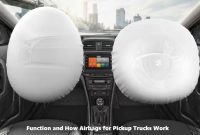Electronic brake distribution or EBD is one of the safety features that has an important role in improving the safety of drivers while driving. As the name implies, this feature will help in optimizing the braking system. In addition to EBD, there are other similar braking system features, namely ABS or Anti-lock Braking System and BA or Brake Assist.

Getting to Know the Electronic Brake Distribution or EBD Feature on Cars
EBD is actually a subsystem of ABS or Anti-lock Braking and ESC or Electronic Stability Control. This safety feature will work to balance the braking pressure on each wheel of the car. In fact, EBD can also adjust the braking pressure based on the road conditions passed and the speed at which the driver brakes.
This feature will adjust or control the stability of the car’s braking suddenly. This feature will stabilize the wheels of cars that have different speeds when sudden braking occurs with the aim of avoiding slippage or oversteer, which can certainly endanger drivers and other road users. Therefore, this feature is very important for driving safety.
Components in EBD
Electronic Brake Distribution works with several components, each of which has its own function.
Speed Sensor
The first component that is quite important for EBD is the speed sensor, which has an important function. Its function is to provide information about the speed of wheel rotation and detect slippage on the car wheels. Then, if there is a slip on the wheel, this system will send a signal to the ECU or Electronic Control Unit to adjust the braking with the appropriate pressure.
Electronic Control Unit or ECU
Another component is an Electronic Control Unit or ECU that will receive information from the speed sensor. Then, after receiving the information, the ECU will process it and determine how much braking pressure should be applied to the vehicle. The ECU also functions to transmit signals from the speed sensor to another part, namely the Brake Force Modulator.
Brake Force Modulator
The last Electronic Brake Distribution component is Brake Force Modulator which will receive the required braking pressure information from ECU. This component itself will play a role in regulating the braking pressure for each car wheel according to instructions from the ECU. After receiving a signal from the sensor, this component will immediately work by applying the appropriate braking pressure to each wheel so that braking can run optimally.
Although related, based on a video from The Car Doctor Pakistan‘s YouTube channel EBD, ABS, and BA are indeed different. EBD has a role in distributing braking power to all wheels and is still related to ABS. ABS functions to prevent the car’s wheels from locking when braking suddenly so that the car can still dodge. Meanwhile, BA functions to tighten the braking system when the driver brakes suddenly.
Electronic Brake Distribution or EBD is indeed a very important and useful feature. This feature is able to distribute braking to all wheels of the vehicle. Stabilizing wheels that have different speeds and preventing the wheels from locking or slipping when braking. That way, braking can run more optimally and improve the safety of drivers and other road users./decha



